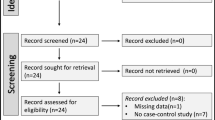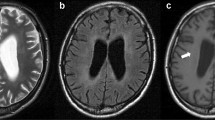Abstract
OBJECTIVE: To summarize current information on the relation between CD4 counts and the risk of different HIV-related diseases.
MEASUREMENTS AND MAIN RESULTS: MEDLINE search of English language articles between 1985 and 1996 using the medical subject heading (MeSH) term “CD4 lymphocyte count” and searches using key words of multiple HIV-related diseases were conducted. Some HIV-related diseases can be stratified to different CD4 count levels. Regardless of their CD4 count, HIV-infected patients are susceptible to sinusitis, Kaposi’s sarcoma, community-acquired pneumonia, and oral hairy leukoplakia. In advanced HIV, when CD4 is below 200/mm3, Pneumocystis carinii pneumonia, toxoplasmosis, progressive multifocal leukoencephalopathy, Mycobacterium avium complex, molluscum contagiosum, and bacillary angiomatosis all increase in incidence. In very advanced HIV disease, when CD4 counts are below 50/mm3, patients are at risk of pseudomonas pneumonia, cytomegalovirus retinitis, central nervous system lymphoma, aspergillosis, and disseminated histoplasmosis.
Summary
Regardless of their CD4 count, HIV-infected patients are susceptible to sinusitis, community-acquired pneumonia, oral hairy leukoplakia, Kaposi’s sarcoma, and HIV meningitis. Once their CD4 counts drop below 500/mm3, they are at risk of developing tuberculosis, thrush, herpes simplex, and herpes zoster. In advanced HIV, when their CD4 counts are below 200/mm3, PCP, coccidioidomycosis, bacillary angiomatosis, molluscum contagiosum, cryptococcal meningitis, toxoplasmosis, progressive multifocal leukoencephalopathy, Mycobacterium avium complex, and non-Hodgkin’s lymphoma all increase in incidence. In very advanced HIV, when their CD4 counts are below 50/mm3, they are at risk of pseudomonas pneumonia, CMV retinitis, CNS lymphoma, aspergillosis, and histoplasmosis. By appreciating these characteristic changes in disease incidence, and by knowing a patient’s CD4 count, clinicians should be better able to develop differential diagnoses and plans for diagnostic evaluation.
Similar content being viewed by others
References
Mellors JW, Rinaldo CR, Gupta P, White RM, Todd JA, Kingsley LA. Prognosis in HIV-1 infection predicted by the quantity of the virus in plasma. Science. 1996;272:1167–70.
A study of HIV RNA viral load in AIDS patients with bacterial pneumonia. J. Acquir Immune Defic Syndr Hum Retrovirol. 1996; 13(1):23–6.
Baroud JM, Haley L, Montaner JS, Murphy C, Januszewska M, Schechter MT. Quantification of the variation due to laboratory and physiologic sources in CD4 lymphocyte counts of clinically stable HIV-infected individuals. J Acquir Immune Defic Syndr. 1995;10(suppl 2):S67–73.
Hughes MD, Stein DS, Gundacker HM, Valentine FT, Phair JP, Volberding PA. Within-subject variation in CD4 lymphocyte count in asymptomatic human immunodeficiency virus infection: implications for patient monitoring. J Infect Dis. 1994;169:28–36.
Turner BJ, Hecht FM, Ismail RB. CD4+ T-lymphocyte measures in the treatment of individuals infected with human immunodeficiency virus type 1. Arch Intern Med. 1994;154:1561–73.
Holmberg SD, Buchbinder SP, Conley LJ, et al. The spectrum of medical conditions and symptoms before acquired immunodeficiency syndrome in homosexual and bisexual men infected with the human immunodeficiency virus. Am J Epidemiol. 1995;141:395–404.
Godofsky EW, Zinreich J, Armstrong M, Leslie JM, Weikel CS. Sinusitis in HIV-infected patients: a clinical and radiographic review. Am J Med. 1992;93:163–70.
Zurlo JJ, Feuerstein IM, Lebovics R, Lane HC. Sinusitis in HIV-1 infection. Am J Med. 1992;93:157–62.
Milgram LM, Rubin JS, Rosenstreich DL, Small CB. Sinusitis in human immunodeficiency virus infection, typical and atypical organisms. J Otolaryngol. 1994;23:450–3.
Tami TA. The management of sinusitis in patients infected with the human immunodeficiency virus (HIV). Ear Nose Throat J. 1995;74:360–3.
Meyer RD, Gaultier CR, Yamashita JT, et al. Fungal sinusitis in patients with AIDS: report of 4 cases and review of the literature. Medicine. 1994;73:69–78.
Wallace JM, Rao AV, Glassroth J, et al., and the Pulmonary Complications of HIV Infection Study Group. Respiratory illness in persons with human immunodeficiency virus infection. Am Rev Respir Dis. 1993;148:1523–9.
Hirschtick RE, Glassroth J, Jordan MC, et al. Bacterial pneumonia in persons infected with the human immunodeficiency virus. N Engl J Med. 1995;333:845–51.
Caiaffa WT, Viahov D, Graham NMH, et al. Drug smoking, Pneumocystis carinii pneumonia, and immunosuppression increased risk of bacterial pneumonia in human immunodeficiency virus-seropositive injection drug users. Am J Respir Crit Care Med. 1994;150:1493–8.
Janoff EN, Breiman RF, Daley CL, Hopewell PC. Pneumococcal disease during HIV infection. Epidemiologic, clinical, and immunologic perspectives. Ann Int Med. 1992;117:314–24.
Farizo KM, Buehler JW, Chamberland ME, et al. Spectrum of disease in persons with human immunodeficiency virus infection in the United States. JAMA. 1992;267:1798–1805.
Baron AD, Hollander H. Pseudomonas aeruginosa bronchopulmonary infection in late human immunodeficiency virus disease. Am Rev Respir Dis. 1993;148:992–6.
Schuster MG, Norris AH. Community-acquired Pseudomonas aeruginosa pneumonia in patients with HIV infection. AIDS. 1994;8:1437–41.
Jensen BN, Gerstoft J, Hojlyng N, et al. Pulmonary pathogens in HIV-infected patients. Scand J Infect Dis. 1990;22:413–20.
Masur H, Ognibene FP, Yarchoan R, et al. CD4 counts as predictors of opportunistic pneumonias in human immunodeficiency virus (HIV) infection. Ann Intern Med. 1989;111:223–31.
Wheat J. Histoplasmosis and coccidioidomycosis in individuals with AIDS. A clinical review. Infect Dis Clin North Am. 1994;8:467–82.
Nightingale SD, Parks JM, Pounders SM, et al. Disseminated histoplasmosis in patients with AIDS. South Med J. 1990;83:624–30.
Keating JJ, Rogers T, Petrou M, et al. Management of pulmonary aspergillosis in AIDS: an emerging clinical problem. J Clin Pathol. 1994;47:805–9.
Girardi E, Antonucci G, Armignacco O, et al. Tuberculosis and AIDS: a retrospective, longitudinal, multicentre study of Italian AIDS patients. J Infect Dis. 1994;28:261–9.
Chaisson RE, Schecter GF, Theuer CP, et al. Tuberculosis in patients with the acquired immunodeficiency syndrome. Clinical features, response to therapy, and survival. Am Rev Respir Dis. 1987;136:570–4.
Long R, Maycher B, Scalcini M, Manfreda J. The chest roentgenogram in pulmonary tuberculosis patients seropositive for human immunodeficiency virus type 1. Chest. 1991;99:123–7.
Keiper MD, Beumont M, Elshami A, et al. CD4 T lymphocyte count and the radiographic presentation of pulmonary tuberculosis. Chest. 1995;107:74–80.
Barr CE. Oral diseases in HIV-1 infection. Dysphagia. 1992;7:126–37.
Crowe SM, Carlin JB, Stewart KI, Lucas CR, Hoy JF. Predictive value of CD4 lymphocyte numbers for the development of opportunistic infections and malignancies in HIV-infected persons. J Acquir Immune Defic Syndr. 1991;4:770–6.
Imam N, Carpenter CCJ, Mayer KH, et al. Hierarchical pattern of mucosal candida infections in HIV-seropositive women. Am J Med. 1990;89:142–6.
Conant MA. Fungal infections in AIDS and other immunocompromised patients. J Am Acad Dermatol. 1994;31:S47–50.
Drew WL, Buhles W, Erlich KS. Herpesvirus infections (cytomegalovirus, herpes simplex virus, varicella zoster virus). How to use gancyclovir (DHPG) and acyclovir. Infect Dis Clin North Am. 1988;2:495–509.
Koopman RJJ, van Merriènboer FCJ, Vreden SGS, Dolmans WMV. Molluscum contagiosum; a marker for advanced HIV infection. Br J Dermatol. 1992;126:528. Letter.
Schwartz JJ, Myskowski PL. Molluscum contagiosum in pattents with human immunodeficiency virus infection: a review of twenty-seven patients. J Am Acad Dermatol. 1992;27:583–8.
Itin PH. Oral hairy leukoplakia-10 years on. Dermatology. 1993;187:159–163.
Rosenthal D, LeBoit PE, Klumpp L, Berger TG. Human immunodeficiency virus-associated eosinophilic folliculitis. A unique dermatosis associated with advanced human immunodeficiency virus infection. Arch Dermatol. 1991;127:206–9.
Khorenian SD, Lebwohl M. New cutaneous manifestations of systemic disease. Am Fam Phys. 1995;51:625–30.
Schatz O, Bogner JR, Goebel FD. Kaposi’s sarcoma: is the hunt for the culprit now over? J Mol Med. 1997;75(1):28–34.
Orfanos CE, Husak R, Wölfer U, Garbe C. Kaposi’s sarcoma: a reevaluation. Recent Results Cancer Res. 1995;139:275–96.
Koehler JE, Tappero JW. Bacillary angiomatosis and bacillary peliosis in patients infected with human immunodeficiency virus. Clin Infect Dis. 1993;17:612–24.
Bacellar H, Muñoz A, Miller EN, et al. Temporal trends in the incidence of HIV-1-related neurologic diseases: multicenter AIDS cohort study, 1985–1992. Neurology. 1994;44:1892–1900.
Mariuz P, Bosler EM, Luft BJ. Toxoplasmosis in individuals with AIDS. Infect Dis Clin North Am. 1994;8:365–81.
Powderly WG, Cryptococcal meningitis and AIDS. Clin Infect Dis. 1993;17:837–42.
Pertel P, Hirschtick R, Phair J, et al. Risk of developing cytomegalovirus retinitis in persons infected with the human immunodeficiency virus. J Acquir Immune Defic Syndr. 1992;5:1069–74.
Smith MA, Brennessel DJ. Cytomegalovirus. Infect Dis Clin North Am. 1994;8:427–38.
Von-Einsiedel RW, Tomiyasu U, Itabashi HH, Vinters HV. Progressive multifocal leukoencephalopathy in AIDS: a clinicopathologic study and review of the literature. J Neurol. 1993;240(7):391–406.
Mcarthur JC. Neurologic manifestations of AIDS. Medicine. 1987;6:407–35.
Rubin DS, Rahal JJ. Mycobacterial avium complex. Infect Dis Clin North Am. 1994;8:413–26.
Author information
Authors and Affiliations
Additional information
Received from the Department of Medicine, University of Washington, Seattle.
Rights and permissions
About this article
Cite this article
Jung, A.C., Paauw, D.S. Diagnosing HIV-Related disease. J GEN INTERN MED 13, 131–136 (1998). https://doi.org/10.1046/j.1525-1497.1998.00031.x
Issue Date:
DOI: https://doi.org/10.1046/j.1525-1497.1998.00031.x




